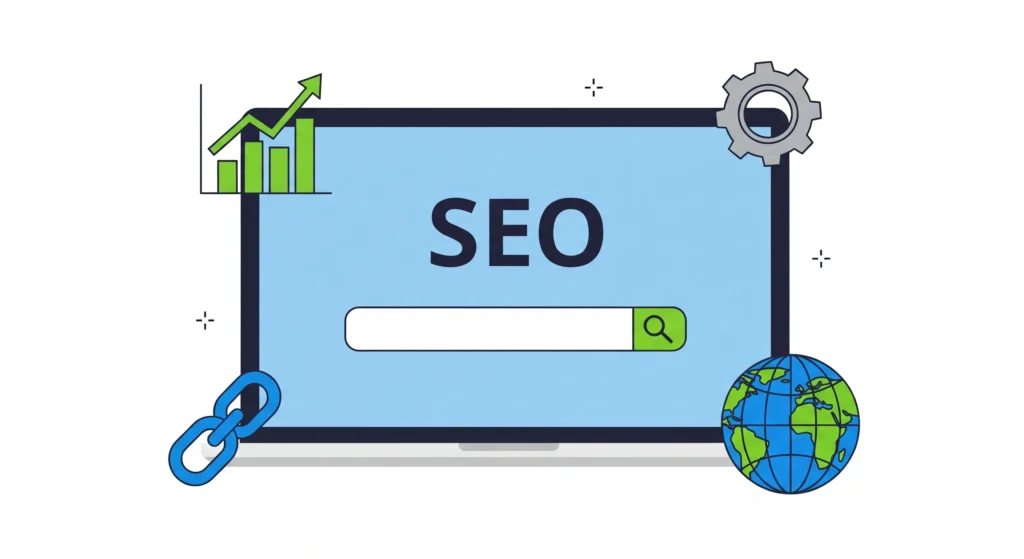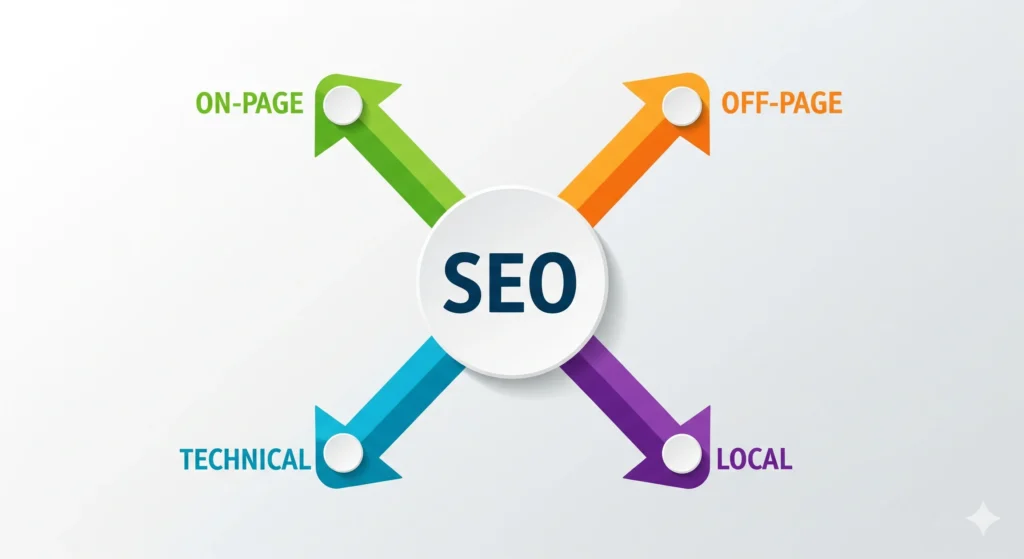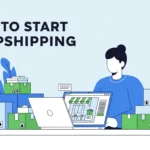If you’ve ever googled something like “best shoes for flat feet” or “how to fix slow Wi-Fi” and found yourself scrolling through articles, you’ve already seen SEO in action. Some sites pop up first, some are buried on page three where almost no one bothers to look. That difference—the visibility game—is where SEO comes in.
SEO stands for Search Engine Optimization. In plain words, it’s the process of making your website show up higher when people search for things related to what you offer. It’s like decorating your store window in a busy market so that more people stop, peek inside, and maybe buy something.
Now, a lot of people overcomplicate SEO with fancy jargon and endless frameworks. But if you peel back the layers, SEO is about two big goals:
-
Helping search engines understand your site.
-
Helping humans find value in your site.
That’s it.
Let’s unpack it in a way that makes sense without drowning in buzzwords.
How Search Engines Actually Work (Without the Nerdy Overload)
Think of Google as a massive librarian. Instead of physical books, it manages billions of websites. When you search, you’re basically asking this librarian, “Hey, can you show me the best info on this topic?”
Here’s the short version of what happens behind the scenes:
-
Crawling: Bots (they’re like digital ants) move around the web, following links, and collecting info about web pages.
-
Indexing: The collected info goes into Google’s giant library (its index).
-
Ranking: When you type in your search, Google decides which pages from its library seem most relevant, useful, and trustworthy. Those go to the top.
So when we talk about “doing SEO,” we’re really just trying to make sure:
-
Google can crawl and index our content easily.
-
Our page looks valuable enough to rank high when someone searches.
The Heart of SEO: Why It Even Matters
Some people think SEO is just for marketers or big companies. But the truth is, SEO matters for anyone who wants attention online—whether you’re running a local café, a personal blog, a YouTube channel, or a full-blown e-commerce site.
Why? Because most of our online journeys start with a search. We type into Google, “nearest dentist,” “best budget laptop 2025,” or “quick chicken curry recipe.” If your site shows up there, you get free, consistent visitors who are already interested in what you offer. That’s way more powerful than just throwing ads everywhere.
Here’s another angle: ads stop working the moment you stop paying. SEO, when done right, keeps paying off over the long run.
Breaking Down the Types of SEO
When people say “SEO,” they actually mean a bundle of strategies. Here’s how it usually breaks down:
1. On-Page SEO
This is everything you do on your site to make it clear, helpful, and searchable. It includes things like:
-
Writing good content with keywords people actually search for.
-
Structuring your pages with titles, headings, and links.
-
Making sure images have alt text.
-
Keeping your site fast and mobile-friendly.
It’s like making sure your room is tidy before guests arrive.
2. Off-Page SEO
This is the reputation side. It’s about how other sites view yours. Do they link to you? Do people talk about your brand online? Are you active on social platforms? Google pays attention to these signals as a way of judging whether you’re trustworthy.
Think of it like word-of-mouth. If everyone in town is recommending your café, new visitors are more likely to trust you.
3. Technical SEO
This one sounds scarier than it is. It’s basically about the behind-the-scenes stuff that makes your site easy for search engines to understand. Things like:
-
Having a clear site structure.
-
Using HTTPS (the lock symbol in your browser).
-
Fixing broken links.
-
Submitting sitemaps.
It’s the plumbing and wiring of your house—people don’t always see it, but if it’s broken, everyone notices.
4. Local SEO
If you run a business that serves a specific area (restaurants, gyms, salons), this is huge. Local SEO is how you show up when people search “near me.” It involves optimizing your Google Business Profile, getting reviews, and making sure your address and contact details are accurate across the web.
SEO Isn’t Just About Keywords Anymore
If you’ve ever read outdated SEO guides, you might see advice like “just stuff your keywords everywhere.” That used to work, like a decade ago. People would literally repeat phrases like “best pizza in New York best pizza in New York best pizza in New York” and rank.
Today, Google is way smarter. It uses AI to understand context, user intent, and even the meaning behind phrases. For example, if you type “Apple store near me,” Google knows you mean the tech brand, not the fruit.
So, instead of obsessing over keyword stuffing, modern SEO is about understanding what people really want when they search—and then creating content that actually answers their question.
The Human Side of SEO
Something people forget: SEO isn’t just about algorithms. It’s about people. Behind every search is a person trying to solve a problem, learn something, or make a decision.
If your content feels robotic, too salesy, or disconnected, people will click away. Google notices that. High bounce rates, short time spent on your page, or users quickly going back to search results—those are signals your content wasn’t satisfying.
The trick is to write for humans first, then polish for search engines. That balance is what separates a forgettable blog from one that actually builds an audience.
Common Myths That Still Float Around
Let’s clear a few things up because SEO myths spread like wildfire:
-
Myth 1: SEO is a one-time task.
Nope. It’s ongoing. Algorithms change, competition evolves, and user habits shift. -
Myth 2: You just need more backlinks.
Not all links are good. Spammy or irrelevant backlinks can actually hurt your site. -
Myth 3: SEO is about tricking Google.
Maybe in the early 2000s, but now, Google’s whole goal is to reward genuinely useful sites. If you try to cheat, you’ll get caught. -
Myth 4: You’ll see results overnight.
SEO takes time—often months. It’s a slow build, but it compounds.
What Good SEO Looks Like in Practice
Let’s use an example. Say you run a small online store that sells eco-friendly skincare. How would SEO come into play?
-
You’d research what people search for—like “organic face wash for acne” or “plastic-free moisturizer.”
-
You’d create blog posts or product descriptions around those topics, making sure they’re clear, informative, and easy to read.
-
You’d optimize your product pages with proper headings, images, and keywords.
-
You’d reach out to eco-blogs for guest posts or product reviews (off-page SEO).
-
You’d make sure your site loads quickly, looks good on mobile, and has no broken links (technical SEO).
Over time, you’d notice your store showing up higher in search results, bringing in steady, free traffic without relying only on ads.
Why SEO Feels Hard Sometimes
Here’s the thing: SEO can feel overwhelming because there’s no fixed rulebook. Google updates its algorithm constantly. What works today might need adjusting tomorrow. Plus, competition is fierce—everyone wants that top spot.
But the core principle never changes: create something useful and make sure it’s easy to find. If you keep coming back to that, you’ll be ahead of most people who are just chasing quick hacks.
The Long Game of SEO
One of the best (and most frustrating) things about SEO is that it’s a long-term game. You won’t always see results right away. But once you build a strong foundation, it snowballs. Your content keeps ranking, attracting new visitors, and building trust.
Think of SEO like planting a garden. You prepare the soil, plant seeds, water them, and wait. It takes time. But once the plants grow, they keep giving back season after season.
So, What Is SEO Really?
If we strip away all the fluff, SEO is about:
-
Making sure search engines can understand your content.
-
Creating value that makes humans stick around.
-
Building trust over time through consistent effort.
It’s less about “gaming the system” and more about earning your place in search results.
Final Thoughts
If you’re just starting out, don’t let SEO scare you. You don’t need to master every technical detail on day one. Begin with the basics: write helpful content, use simple keywords naturally, and make sure your site runs smoothly. As you grow, you can dive deeper into advanced tactics.
And remember—SEO isn’t about chasing Google. It’s about serving people. If you keep that focus, you’ll naturally align with what search engines reward.
So next time someone asks you “What is SEO?” you don’t need to quote a textbook. You can just say: “It’s the art of making your website easy to find and worth visiting.”




